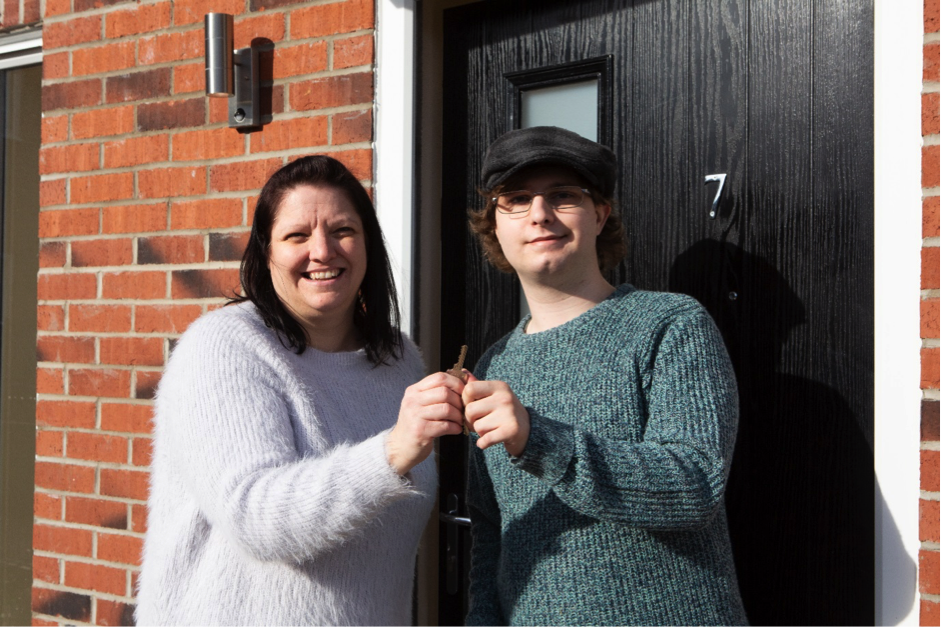Currently councils are housing over 200,000 homeless people in temporary accommodation. 1.1 million households are currently on the social housing waiting list.
Over the last century, council housing has been essential in helping the most vulnerable in society gain access to a home and has helped to prevent homelessness. They have built 5.5 million homes contributing to millions of families finding homes.
However, in the past 10 years council building has slumped. Councils are now only building, on average, 1,400 homes a year due to Government restrictions.
Currently councils are housing over 200,000 homeless people in temporary accommodation with many more people living on the streets. 1.2 million households are currently on the social housing waiting list.
The country needs a renaissance in council house building. We believe that #CouncilsCan once again have a key role in building the homes the country needs but they need the powers to do so.
“This has been absolutely life changing for us as a family”
Case studies
Importance of council housing | Debra’s story, Selby Council
“This has been absolutely life changing for us as a family”, explained Debra Thomas, who’s just moved into one of Selby District Council’s brand new social homes at Byram.
Debra has three children, one of whom is severely autistic. “We’ve been living in the village for nearly 20 years so to get a four-bedroom house in the local area was amazing”, she explained. “It’s especially important for our youngest son, James. Because of his autism, James really needs support when dealing with change. Moving to a new home so close by has meant that we’ve been able to remain really settled”.
Debra's new home is one of 13 council-owned family homes that have just been built. The development is part of a long-term £22 million investment in new affordable homes across the area by Selby District Council. At Byram, the new family homes replace previously hard-to-let flats. “These new homes offer people in the area the type of properties they need”, explained Council Leader, Cllr Mark Crane. “It’s also a chance for us to invest in the community, to create better spaces and homes for local people.”
Cllr Crane continued, “Investing in affordable homes is part of our commitment to making the Selby district a great place to enjoy life. We know we’ve got a really good quality of life here and it’s important to ensure that the council continues to support this and to support people’s access to good quality homes.”
The new Byram homes have been let through North Yorkshire Homechoice. This brings together a range of councils and housing suppliers across the county to support a single approach to lettings. Preference is given to those with an established local connection.
Importance of council housing | South Holland District Council
Christine was born in 1954 and has lived in Council housing for most of her life. She grew up in a bungalow in Gosberton and now lives in sheltered accommodation near Spalding. To celebrate 100 years of council housing, we got Christine and her friends Evelyn, Lil and Caroline, who also live in sheltered accommodation, together with South Holland District Council's portfolio holder for housing, Cllr Christine Lawton, to share their experiences from almost 200 combined years of life in council housing.
When the foundations of Rotherham’s first council homes were being dug, Una was a baby, taking her very first steps. Last year Una celebrated her 100th birthday surrounded by family and friends in her own council home at Maltby.
Una moved into the two-bedroom house with her two children Kathleen and Michael as a single parent in 1950. Her own mum moved in with them for support.
Una remembers the strong sense of community: “It was a relatively new house with a lovely garden in a quiet street. I worked at the chemist in the High Street. I knew lots of people. It was a very nice place to bring up children.
“There were allotments at the end of the garden. We used to swap a cup of tea for a few vegetables with the gardeners and the children used to help them water their plants.”
Today Una still enjoys the company of her neighbours. She said: “I take in parcels for people and Bob next door comes in to fix things now and then. I have very much enjoyed living here and I still do.”

